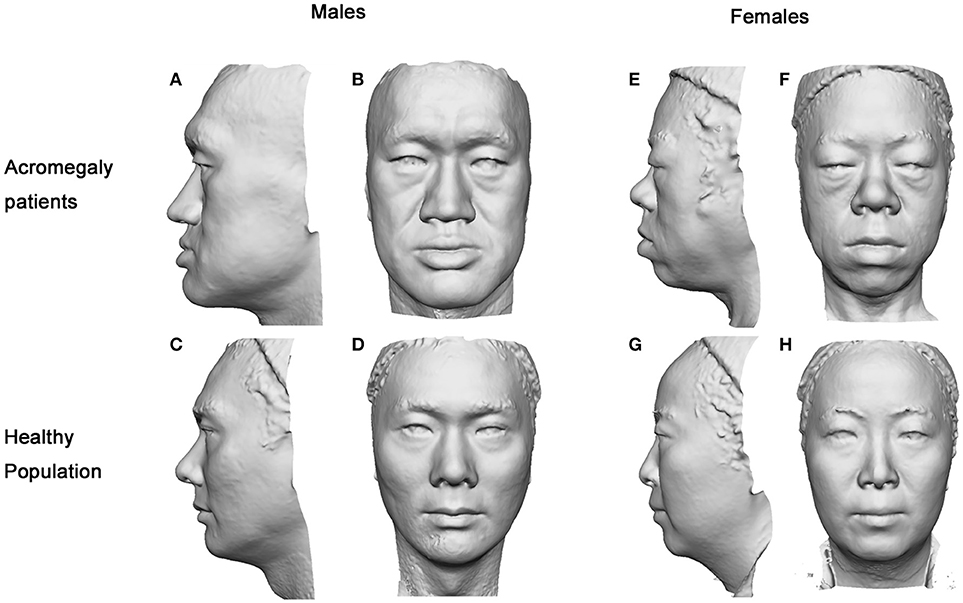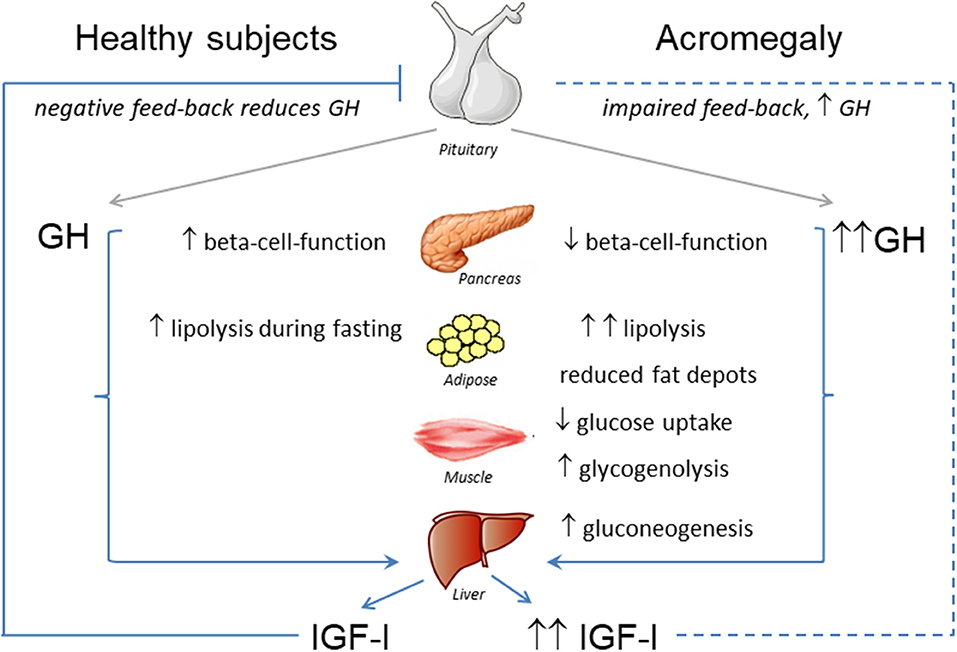Acromegaly, often abbreviated as ACRO, is a rare hormonal disorder that occurs when the body produces excessive amounts of growth hormone. This condition primarily affects adults and leads to abnormal growth in various parts of the body, including bones and tissues. While it may not be widely recognized, acromegaly can significantly impact a person’s quality of life if left untreated. In this article, we will explore the causes, symptoms, diagnosis, and treatment options for this growth hormone disorder.

Understanding Acromegaly
Acromegaly develops when there is an overproduction of growth hormone, which is typically secreted by the pituitary gland located at the base of the brain. The excessive secretion of this hormone leads to an increase in the production of another substance called insulin-like growth factor 1, which plays a key role in regulating growth processes in the body. Over time, this imbalance results in noticeable physical changes and other health complications.
Primary Cause of Acromegaly
The primary cause of acromegaly is the presence of a benign tumor, known as an adenoma, on the pituitary gland. These tumors are noncancerous but can disrupt normal hormone production by causing the gland to release too much growth hormone into the bloodstream. In some cases, acromegaly can also result from tumors in other parts of the body, such as the lungs or pancreas, which produce growth hormone-releasing hormone. This hormone stimulates the pituitary gland to secrete additional growth hormone, further contributing to the disorder.
Risk Factors
- Family history of endocrine disorders
- Prior radiation therapy to the head or neck region
- Presence of genetic syndromes like Multiple Endocrine Neoplasia Type 1
Symptoms of Acromegaly
The symptoms of acromegaly develop gradually, making it difficult to detect the condition in its early stages. Over time, however, the physical and systemic effects become more pronounced. Some of the most common signs include:
Physical Changes
- Enlargement of the hands and feet
- Coarsening of facial features, such as a protruding jaw, enlarged nose, and thickened lips
- Increased spacing between teeth
- Oily skin and excessive sweating
Systemic Effects
- Joint pain and limited mobility due to cartilage overgrowth
- Fatigue and muscle weakness
- Headaches caused by pressure from the pituitary tumor
- Impaired vision due to compression of optic nerves
Associated Health Complications
Acromegaly can lead to serious health issues if not addressed promptly. These complications may include:
- High blood pressure
- Type 2 diabetes
- Cardiovascular diseases, such as an enlarged heart or heart failure
- Sleep apnea, a condition characterized by interrupted breathing during sleep
- Increased risk of developing colon polyps or colorectal cancer
Diagnosing Acromegaly
Diagnosing acromegaly requires a combination of clinical evaluation, imaging studies, and laboratory tests. Since the symptoms progress slowly, many individuals may go undiagnosed for years. Early detection is crucial to prevent long-term complications.
Clinical Assessment
A healthcare provider will begin by conducting a thorough medical history review and physical examination. During the exam, they may look for characteristic signs such as enlarged hands, feet, and facial features. They may also inquire about any family history of hormonal disorders or related conditions.
Laboratory Tests
To confirm the diagnosis, blood tests are performed to measure the levels of growth hormone and insulin-like growth factor 1. In individuals with acromegaly, both substances are typically elevated. Additionally, a glucose tolerance test may be administered. Normally, consuming glucose lowers growth hormone levels, but in people with acromegaly, these levels remain high even after glucose intake.
Imaging Studies
Magnetic resonance imaging or computed tomography scans are used to visualize the pituitary gland and identify the presence of a tumor. These imaging techniques help determine the size and location of the adenoma, which is essential for planning treatment.
Treatment Options for Acromegaly
While there is no cure for acromegaly, several treatment options are available to manage the condition effectively. The goal of treatment is to reduce growth hormone levels, alleviate symptoms, and prevent complications. The choice of therapy depends on factors such as the size and location of the tumor, the severity of symptoms, and the patient’s overall health.
Surgical Intervention
Surgery is often the first line of treatment for acromegaly, especially when a pituitary tumor is present. The procedure, known as transsphenoidal surgery, involves removing the tumor through the nasal cavity or upper lip. This minimally invasive approach aims to normalize hormone levels and relieve pressure on surrounding structures, such as the optic nerves.
Potential Outcomes
- Complete removal of the tumor, leading to normalized hormone levels
- Partial removal, requiring additional treatments
- Rare complications, such as infection or damage to nearby tissues
Medications
If surgery is not feasible or does not fully resolve the issue, medications may be prescribed to control growth hormone production. Commonly used drugs include:
- Somatostatin analogs, which inhibit the release of growth hormone
- Growth hormone receptor antagonists, which block the effects of excess growth hormone
- Dopamine agonists, which may reduce hormone secretion in some patients
Radiation Therapy
In cases where surgery and medication are insufficient, radiation therapy may be recommended. This treatment uses high-energy beams to target and shrink the tumor. While effective, radiation therapy often takes years to achieve full results and may carry risks such as hypopituitarism, a condition where the pituitary gland fails to produce adequate hormones.
Lifestyle Modifications
Beyond medical interventions, lifestyle changes can play a supportive role in managing acromegaly. These modifications may include:
- Adopting a balanced diet to maintain healthy weight and blood sugar levels
- Engaging in regular exercise to improve joint flexibility and cardiovascular health
- Monitoring and managing associated conditions, such as hypertension and diabetes
Living with Acromegaly
Living with acromegaly can be challenging, both physically and emotionally. Patients may experience frustration due to the gradual nature of symptom development and the potential for long-term complications. However, with proper medical care and support, individuals with acromegaly can lead fulfilling lives.
Emotional and Psychological Support
It is important for patients to seek emotional and psychological support to cope with the challenges of living with acromegaly. Counseling, support groups, and educational resources can provide valuable guidance and encouragement throughout the treatment journey.
Regular Follow-Up Care
Ongoing monitoring is essential to ensure that growth hormone levels remain within a normal range and to address any emerging complications promptly. Regular check-ups with an endocrinologist, along with periodic imaging studies and blood tests, are critical components of long-term management.





